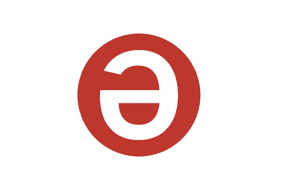
Glossary
Welcome to our intellectual property glossary. Here you will find clear and concise definitions of the most common terms related to intellectual property and copyright:
Intellectual Property
Intellectual Property (IP) encompasses all works produced by the human mind, such as artistic, literary, academic works, inventions, symbols, or trade names. It is divided into two categories: industrial property and copyright. Each has its own scope and protects different types of works, but sometimes the boundary can be blurred or overlap, as in the case of industrial design. When a type of work can be protected by both industrial property and copyright, it is called “cumulative protection.” Important: It is often used synonymously with “copyright,” excluding industrial property.
Bern Convention
The Bern Convention for the Protection of Literary and Artistic Works (1886) contains provisions that determine the minimum protection that copyright must have. Its three basic principles are:
1. If the author is a citizen of a signatory state of the Bern Convention, their work is protected in all others.
2. Copyright protection is automatic. No formalities are required.
3. Copyright is protected even if the author’s country of origin does not grant protection by law.
Moreover, if a Contracting State provides for a longer protection period than the minimum prescribed by the Convention, and protection ceases in the country of origin, protection may be denied once it has ceased in the country of origin. More information.
Authorship Rights aka Copyrights
A set of exclusive rights granted by law to creators over their literary, artistic, musical, scientific, or educational creations, expressed in any medium or format, tangible or intangible. (Divided into two types of rights).
Moral Rights
Non-transferable and non-waivable rights of the author that ensure the authorship of the work and respect for its integrity, modifications, and how it is disclosed.
Economic Rights
The author’s exclusive rights to use their work and authorize others to do so in specific ways, such as reproduction, distribution, public communication, or transformation. These rights can be sold or licensed.
Related Rights
Rights of third parties involved in making the work available. They are not rights over the work itself but over actions related to bringing it to the public. Related information: Rome Convention.
Rights Holder
The person or entity who, by authorship or licensing, can legally exercise their rights over the work. For example, a publisher that holds the distribution rights to a novel for two years in Mexico.
Collective Management
Organizations that manage the copyright and related rights of various holders, allowing more efficient management through licensing, royalty collection, and distribution.
Copyright Registration
Provides prima facie evidence of authorship and creation date.
Author
The natural person who creates a literary or artistic work.
Work
An original creation expressed in any medium or format, tangible or intangible, such as texts, musical works, drawings, paintings, sculptures, engravings, photographs, audiovisual works, among others.
Derivative Work
A new work created from one or more pre-existing works, such as a translation, musical adaptation, arrangement, transformation, or any other way a work can be reshaped, transformed, or adapted.
Copyright
It can have two meanings:
– Synonym for “copyright.”
– In Spanish, it is often used as “all rights reserved.” This is the default situation for any work and means that the author has all rights. Unless otherwise stated, no one can use the work without permission.
License
Authorization granted by the author for the use or exploitation of their work under certain conditions. The license can be granted through a contract between the author and interested parties, or by attaching a generic licensing text to the work. This would be the case when assigning a Creative Commons or GPL license. For example, signing a contract with a record company to market our new album, or uploading the songs to the internet indicating that they can only be used and shared non-commercially and citing the authors (Creative Commons BY-NC license). In both cases, we are talking about licensing.
Creative Commons Licenses
A set of licenses that allow authors to offer some of their intellectual property rights, allowing uses of the work that would otherwise be prohibited by copyright.
Fair Use
A legal doctrine in some countries that allows limited use of copyrighted material without seeking permission from the rights’ holder, based on considerations such as the purpose of use (educational, critical, informative) and its effect on the value of the work.
Right of Quotation
The right of any person to incorporate fragments of another author’s work into their creations without seeking authorization. This is possible as long as certain conditions are met, which vary depending on the country’s copyright legislation.
Private Copy
A user’s right to make a copy of a work for personal and non-commercial use, without the need for licensing or explicit permission from the author. Its regulation varies according to each country’s legislation.
Plagiarism
An infringement of copyright that occurs when someone copies a work or part of it without the author’s permission and presents it as their own.
Copyright Infringement
Unauthorized use of a copyrighted work without the permission of the rights’ holder, which can include copying, distributing, publicly performing, or creating derivative works.
Industrial Property
Industrial property includes works that have a primarily technical, practical, or commercial function. For example: patents for inventions, trademarks, industrial designs, or geographical indications. In certain cases, these works may also have an aesthetic character that allows them to be protected by copyright. This is known as “cumulative protection.”
Cumulative Protection
Protection of a work by both copyright and industrial property simultaneously. This special consideration, contemplated in most legislations worldwide, protects works with a dual artistic and technical nature. In industrial designs, for example, copyright can protect the non-functional aspects of the work.
Patent
The grant by a state of commercial exploitation rights to the inventor of a new product or technology. The grant is for specific geographic areas and for a limited time (20 years, according to the Agreement on Trade-Related Aspects of Intellectual Property Rights of 1994).
















